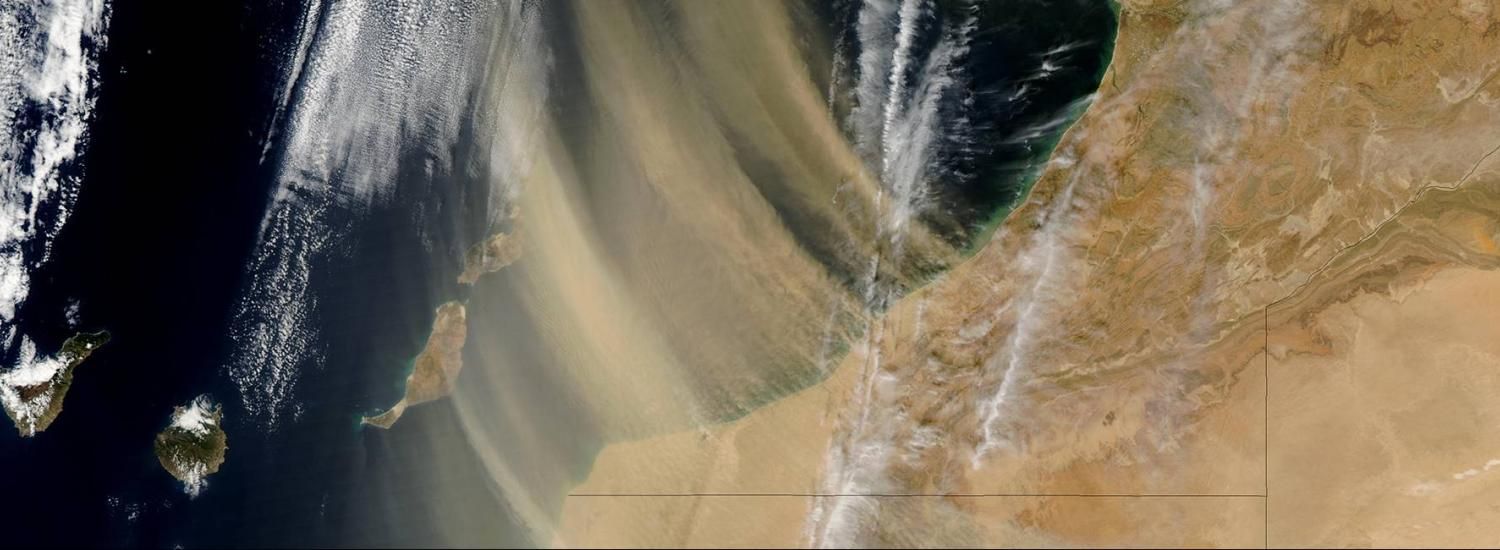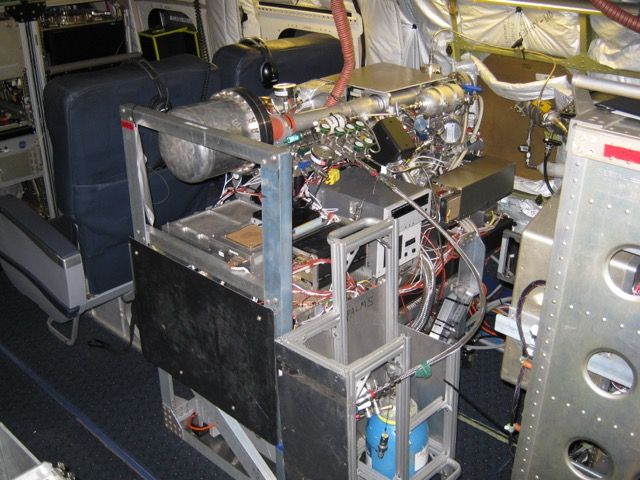Icy cirrus clouds born from desert dust
Airborne study reveals surprisingly large role of desert dust in forming cirrus clouds

Each year, several billion tonnes of mineral dust are lofted into the atmosphere from the world’s arid regions, making dust one of the most abundant types of aerosol particles in the atmosphere. Now, scientists are learning that tiny bits of dust from the hottest and driest parts of the Earth are a surprisingly large driver in forming the delicate, wispy ice clouds known as cirrus in the cold, high altitudes of the atmosphere.
While scientists have known that desert dust particles can seed certain clouds, the extent of that relationship has been a long-standing question. New research, based on the largest-ever airborne atmospheric sampling mission and published today in Nature Geoscience, sheds light on the role of dust in the climate system.
“Dust-initiated cirrus clouds are surprisingly abundant, accounting for 34 to 71 percent of all cirrus clouds outside of the tropics,” said study lead author Karl Froyd, who was a CIRES scientist at NOAA’s Chemical Sciences Laboratory at the time of the study. “Perhaps even more surprising, we found that although the Sahara Desert is by far the world’s largest dust emitter, the deserts in Central Asia are often more important sources for cirrus formation.”
Analysis of atmospheric measurements collected over the remote oceans during NASA’s three-year Atmospheric Tomography Mission (ATom) revealed that dust plays a dominant role in forming cirrus clouds across both the northern and southern hemispheres and that certain deserts are far more efficient than others when it comes to cloud creation.
Being able to properly simulate dust abundance and cirrus formation in models is important for understanding the role of cirrus clouds in climate. Clouds strongly influence the balance of solar radiation that regulates surface temperatures, yet clouds, and cloud formation, remain a poorly understood aspect of the climate system. Unlike the puffy, white clouds that we see at lower altitudes that reflect sunlight, high-altitude cirrus clouds exert a net warming effect on our climate by trapping heat that would otherwise escape into space. The surprisingly large role of mineral dust in controlling cirrus formation on a global scale establishes the critical role of dust in Earth’s climate system.
To explore the role of wind-blown dust in creating cirrus clouds, Froyd and colleagues from CIRES, NOAA, NASA, and other institutions, deployed a custom-built, single-particle mass spectrometer, known as PALMS, on a NASA DC-8 research aircraft to measure the chemical composition of aerosol particles in the remote atmosphere during the ATom project. ATom flights circumnavigated the globe four times between 2016–2018, flying long transects down the Pacific and Atlantic Oceans and across the Arctic and Southern Oceans.

The PALMS instrument on the NASA DC-8 during ATom.
While flying, the PALMS instrument continuously ingested atmospheric particles, one by one, using a laser to vaporize them into their individual components before sending them into a mass spectrometer that revealed their chemical signatures. Mineral dust is just one of the many aerosol types that this powerful instrument is able to identify.
Researchers encountered continental dust across nearly every altitude and latitude sampled by the aircraft, including over the Southern Ocean, the remote Pacific Ocean, and Antarctica. The levels of dust present in the cirrus-forming upper troposphere were far below what could be observed by a satellite, but were ubiquitous. Even at low concentrations, dust was found to play a big role in controlling cloud properties.
The extensive dust measurements collected during ATom were incorporated into a detailed atmospheric model capable of simulating cirrus formation to quantify the effects of dust on cirrus across the globe. Despite the minute quantities of dust aerosols measured in the upper troposphere, dust is still abundant enough to drive cirrus cloud formation during all seasons throughout the extra-tropics, including the Southern Hemisphere.
Modeling results also revealed that the meteorological environment downwind of the desert regions was more important for cirrus formation than simply the amount of dust emitted. The Sahara Desert, for example, accounts for 60 percent of global dust emissions, but only a small fraction of this dust is transported vertically into the cold temperatures of the upper troposphere where it can seed the tiny ice crystals that make up cirrus clouds. In contrast, dry convection and the Asian Summer Monsoon help loft dust from Central Asia more efficiently.
“With climate change, deserts are changing worldwide and dust emissions change with them. These new findings help focus our attention on the most important deserts in terms of cirrus formation,” Froyd said. “These results are a striking message to the aerosol and cloud science community, that we need to improve our treatment of dust and cloud formation in climate models to more accurately predict current and future climate.”
This story was written by NOAA Communications.